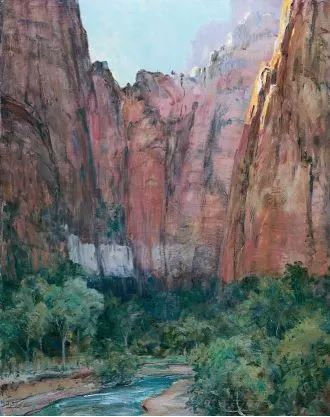Zion National Park, renowned for its stunning red rock formations and diverse wildlife, is home to black bears, albeit in very small numbers. Bear sightings in the park are extremely rare due to the desert environment and low elevations, which are not ideal for bear habitation. However, visitors should still be aware of bear safety measures, especially in higher-elevation forested areas where encounters are more likely to occur.
What Types of Bears Are Found in Zion National Park?

The only species of bear found in Zion National Park is the American black bear (Ursus americanus). Unlike some other national parks, Zion does not have grizzly bears or any other bear species. Black bears are adaptable creatures, but the park’s predominantly arid landscape makes it a challenging environment for them.
How Common Are Bear Sightings in Zion?

Bear sightings in Zion National Park are exceptionally rare. The park’s ecosystem, characterized by:
- Low elevations
- Hot, dry conditions
- Limited forested areas
These factors make it less than ideal for bear populations. However, occasional sightings do occur, particularly in the higher-elevation regions of the park where the habitat is more suitable for bears.
Where Are Bears Most Likely to Be Seen in Zion?
While bear encounters are infrequent, the areas where bears are most likely to be spotted include:
- Lava Point: This higher-elevation area has seen bear activity in the past.
- Kolob Canyons: The forested sections of this area may occasionally host bears.
- East Rim Trail: Higher elevations along this trail could potentially be bear habitat.
It’s important to note that even in these areas, bear sightings are still considered rare events.
What Was the Most Notable Bear Encounter in Zion?
One of the most significant bear-related incidents in Zion National Park occurred near Lava Point. A black bear almost entered a ranger cabin, highlighting the need for proper food storage and bear safety measures. This event led to increased awareness and precautionary measures in the park.
How Does Zion National Park Manage Bear Safety?
Zion National Park takes several measures to ensure visitor safety and minimize human-bear conflicts:
- Bear-proof containers: The park encourages the use of these containers for food storage.
- Bear boxes: Plans are underway to install bear boxes at Lava Point Campground.
- Education: Visitors are informed about bear safety through various channels.
- Monitoring: Park rangers actively monitor and record any bear sightings or activity.
What Bear Safety Tips Should Visitors Follow?
To minimize the risk of bear encounters and ensure safety, visitors should adhere to the following guidelines:
- Store food and scented items in bear-proof containers or vehicles
- Never feed wildlife, including bears
- Dispose of trash properly in designated receptacles
- Make noise while hiking to alert bears of your presence
- Travel in groups when possible
- Carry bear spray in areas where bears are more likely to be present
When Is the Best Time to See Bears in Zion?
Due to the rarity of bear sightings in Zion National Park, there is no specific “best time” to see bears. However, if you’re hoping to increase your chances of a bear sighting:
- Visit during spring or fall when temperatures are milder
- Explore higher-elevation areas with more vegetation
- Hike during early morning or late evening hours when bears are more active
Remember that bear sightings should never be the primary goal of your visit, and it’s crucial to prioritize safety and respect for wildlife.
How Does Zion’s Bear Population Compare to Other National Parks?
Zion National Park’s bear population is significantly smaller compared to many other national parks. Here’s a comparison table:
| National Park | Bear Species | Estimated Population | Sighting Frequency |
|---|---|---|---|
| Zion | Black Bear | Very Low (Exact number unknown) | Extremely Rare |
| Yellowstone | Grizzly & Black Bear | 700-1000 | Common |
| Yosemite | Black Bear | 300-500 | Frequent |
| Great Smoky Mountains | Black Bear | 1,500+ | Common |
This comparison illustrates how unique Zion’s situation is regarding its bear population.
What Should You Do If You Encounter a Bear in Zion?
In the unlikely event of a bear encounter in Zion National Park:
- Remain calm and assess the situation
- Do not run; this may trigger a chase response
- Make yourself appear larger by raising your arms and standing tall
- Speak calmly but firmly to the bear
- Slowly back away while facing the bear
- Use bear spray if necessary and you have it available
- Report the encounter to park rangers immediately
How Does Climate Change Affect Bears in Zion?
Climate change poses potential challenges for the already small bear population in Zion:
- Increased temperatures may further reduce suitable habitat
- Changes in vegetation patterns could affect food sources
- More frequent droughts may lead to increased human-bear conflicts as bears search for water and food
Park officials continue to monitor these potential impacts and adjust management strategies accordingly.
By understanding the rarity of bears in Zion National Park and following proper safety guidelines, visitors can enjoy the park’s natural beauty while minimizing risks to both themselves and the park’s wildlife.
References:
1. No Picnics for Bears – Zion National Park Forever Project
2. Do You Have to Worry About Bears in Zion? – MaxTour
3. Wildlife in Zion – Top 10 Animals of Zion – Bumbleberry Inn
